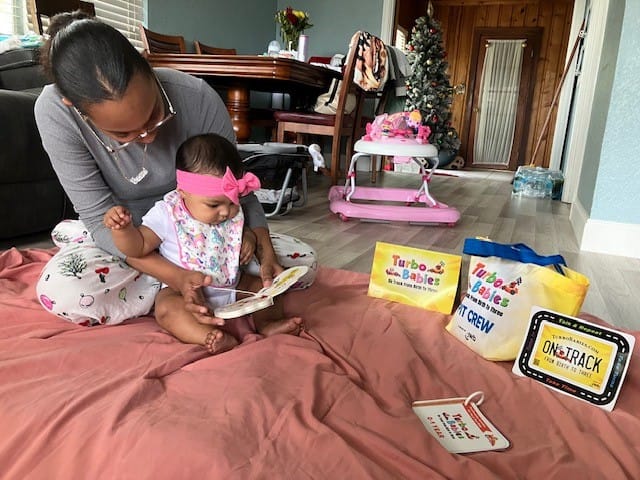Back to School—For the Littlest Learners: Help Your Child Learn and Grow
As backpacks fill store aisles and yellow buses return to their routes, a quieter kind of “back to school” season is already underway. It doesn’t involve class schedules or parent portals — but it does involve brains firing at over a million neural connections per second.
Welcome to the classroom of early childhood. No desks required.
Help Your Child Learn and Grow: The Most Critical Years of Learning
Research confirms what many parents instinctively feel: Babies are born ready to learn. By age 3, a child’s brain reaches 80% of its adult size.
That makes the first 1,000 days from birth to age 3 the most powerful window for cognitive, emotional and social development.
And the best part? You don’t need flashcards or fancy gadgets. You already have everything your baby needs: your voice, your attention and your everyday routines.
Your Baby's Class Schedule: 24/7 Learning Opportunities
While other parents shop for school supplies, you already have everything you need for your baby's education. From morning coffee to bedtime stories, the world around you becomes a rich classroom when you engage with your baby intentionally. These moments may seem small, but they’re packed with developmental power.
- Bath Time becomes a vocabulary lesson when you sing and name body parts: “Here are your tiny toes!”
- Diaper Changes turn into bonding opportunities when you narrate the moment and make eye contact: “Daddy’s coming in fast with the wipe!”
- Stroller Walks become mobile language labs when you describe the world around you: “Look at the big red truck!” or “That breeze feels nice.”
Babies aren’t passive observers. They’re active learners, primed for connection and discovery.

Turbo Babies: Brain Science in Action
The Turbo Babies, fueled by the Juvenile Welfare Board of Pinellas County, distills early brain science into four simple, actionable tips:
- Tune In – Watch and listen for your baby’s cues.
- Take Turns – Pause and let your baby respond, even in babbles.
- Talk & Repeat – Narrate your day, sing and describe.
- Take Time – Use everyday routines to connect and play.
These tips don’t require special toys or apps. They just require you.
Your Baby’s Report Card
You won’t find grades or gold stars here, but the results of your baby’s learning journey are unmistakable. They’re visible in every milestone reached, every new sound made and every moment of connection shared.
You’ll notice it in their growing curiosity, their blossoming communication skills and the secure attachment they’re building with you. These are the lifelong outcomes of a classroom powered by love, presence and everyday interactions.
So this September, while older children settle into new classrooms, remember that your baby’s most important educational journey is already beautifully under way. Class is always in session. The teacher is devoted. And the learning outcomes will last a lifetime.
To learn more and explore science-backed tips for your baby’s first 1,000 days, visit TurboBabies.com.
READ MORE on Early Childhood Development:
- A Hub of Wellness and Growth: An Inside Look at Hillsborough County Children’s Board Family Resource Centers
- 3 Key Benefits Children Find in Early Childhood Education
- What to Know About Florida’s VPK Program and the Benefits of Early Learning
*Presented by Juvenile Welfare Board | Originally published in the September 2025 issue of Tampa Bay Parenting Magazine.


